Well, this blog post is a “failure” because it was not posted to “GoStudio” on time…
The thing about failures in making art is that there are none. I don't believe in it. It’s not about success and failure, it’s about practice. I participate in an "art practice". I have been disappointed in how things turn out but in the end I learn from the experience and learning is never failure. I don’t have any pictures of the installation in this phase but last year I painted the walls of my installation the wrong types of black. The glossiness of the two tones was too close and it didn’t do as I intended. Did this make the piece fail? No, repainted the surface and learned from the experience and then I moved on.
I’ve been reading a lot about Robert Irwin. The book is titled, Forgetting The Name Of The Thing One Sees. His practice is fueled by a desire to answer questions and intuition. This is something that I relate to. There is a point in the book where he talks about his dot paintings. He completed 10 of these paintings in 2 years. Two of them were destroyed with knives in San Paulo, Brazil by people who were angered about the work’s presence during a social upheaval that was occurring at the time. I guess perception wasn’t something that people on the verge of rioting wanted to see. So anyways, we are left with eight on the planet and I don’t really want to drive and find one so I thought I would try it out for myself. The idea is that you put and bunch of red dots with a bunch of green dots of the opposite color on a canvas and then turn the surface grey at distance. Six hours later I had this.


There may be a few directions I will run with this. I may explore painting shadows with this method if I can figure out how to make the greying effect darker which is quite interesting to see in person. Juggling projects has been my direction this last week. I needed to clear my mind a bit so I revisited something a little less mental and a little more free from my past. Interesting how my shabes and forms have changed.

It was nice to revisit this work even though I really have no language for what is happening with it. Just expression. A while back I created a drop shadow GIF to visualize a thought I had and it has been coming to life over the last 3 days. Here are a bunch of process photos. First I went to a local bike shop and begged for a free steel hub that I could refurbish and use as an axil for a rotating grid. After an overhaul I was able to make it smooth as butter. It was nice to do some old bike repair tricks. Makes me miss working in a bike shop.
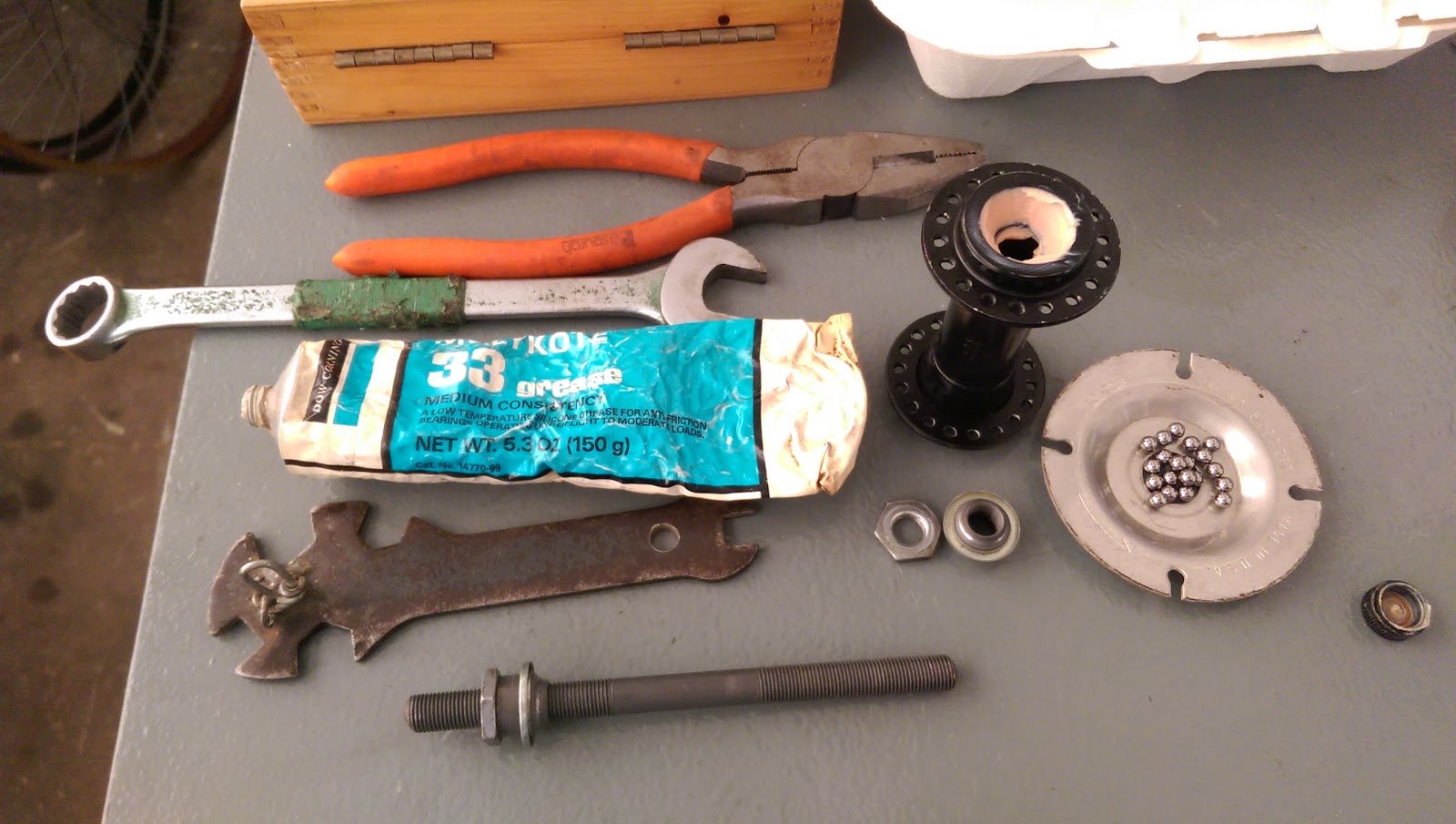
Next I started the construction of a new grid, this time with squared steel rods and a much cleaner assembly method with mitered corners for a flatter build. I intend to paint the object in some fashion in the next few days.

After it was built I cleaned up the welds and cut out a portion to center and weld the wheel hub in place. Then I engineered a mounting plate so that it could be installed on a wall or a piece of plywood. With all this put together I took it outside and placed it in the sun, the best spotlight in the universe. The thing needed to be trued because it had a high and low point in the rotation that killed the effect that I was looking for between the object and its shadow. After I re-welded a few sections things were much more plum.
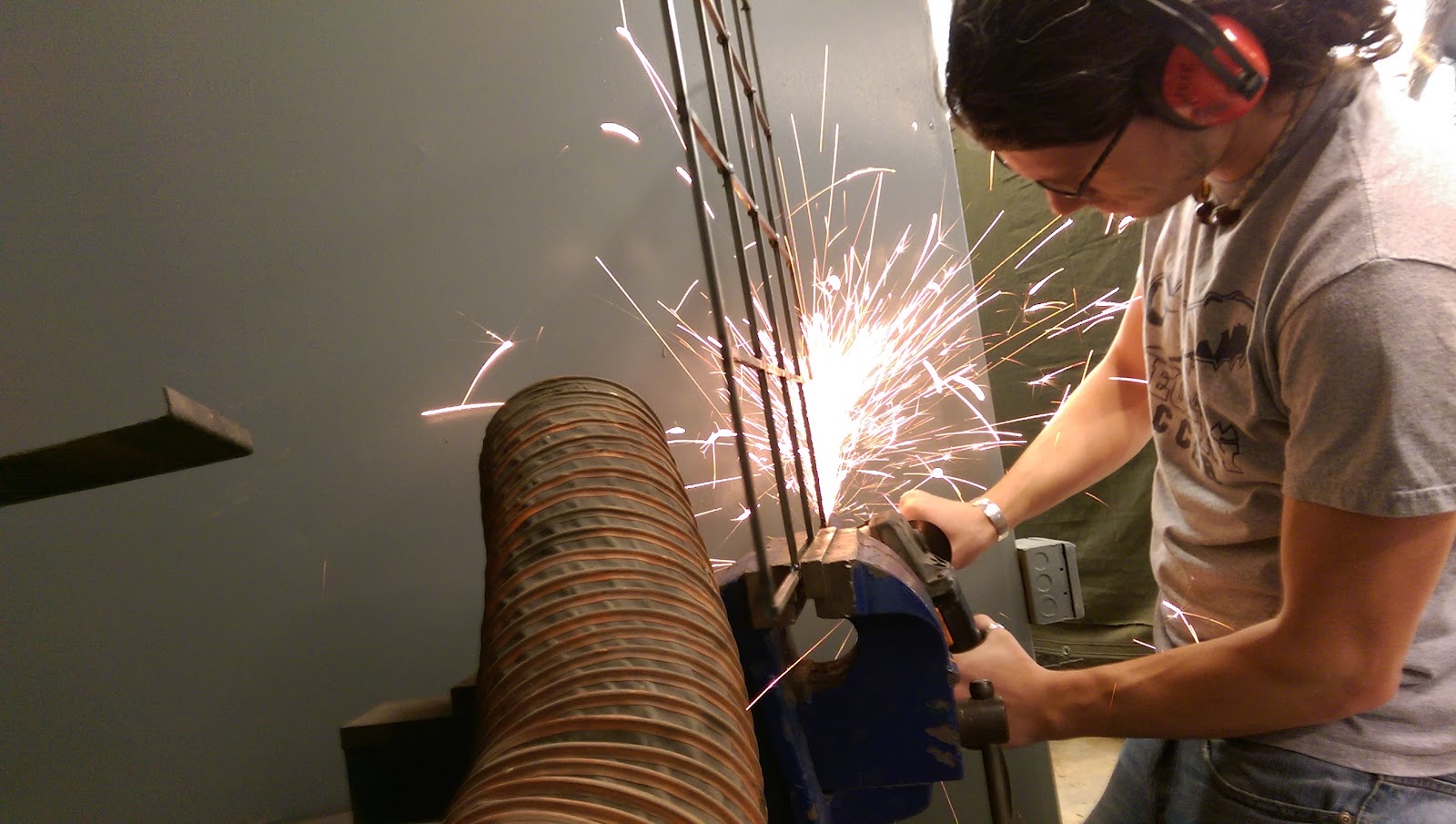
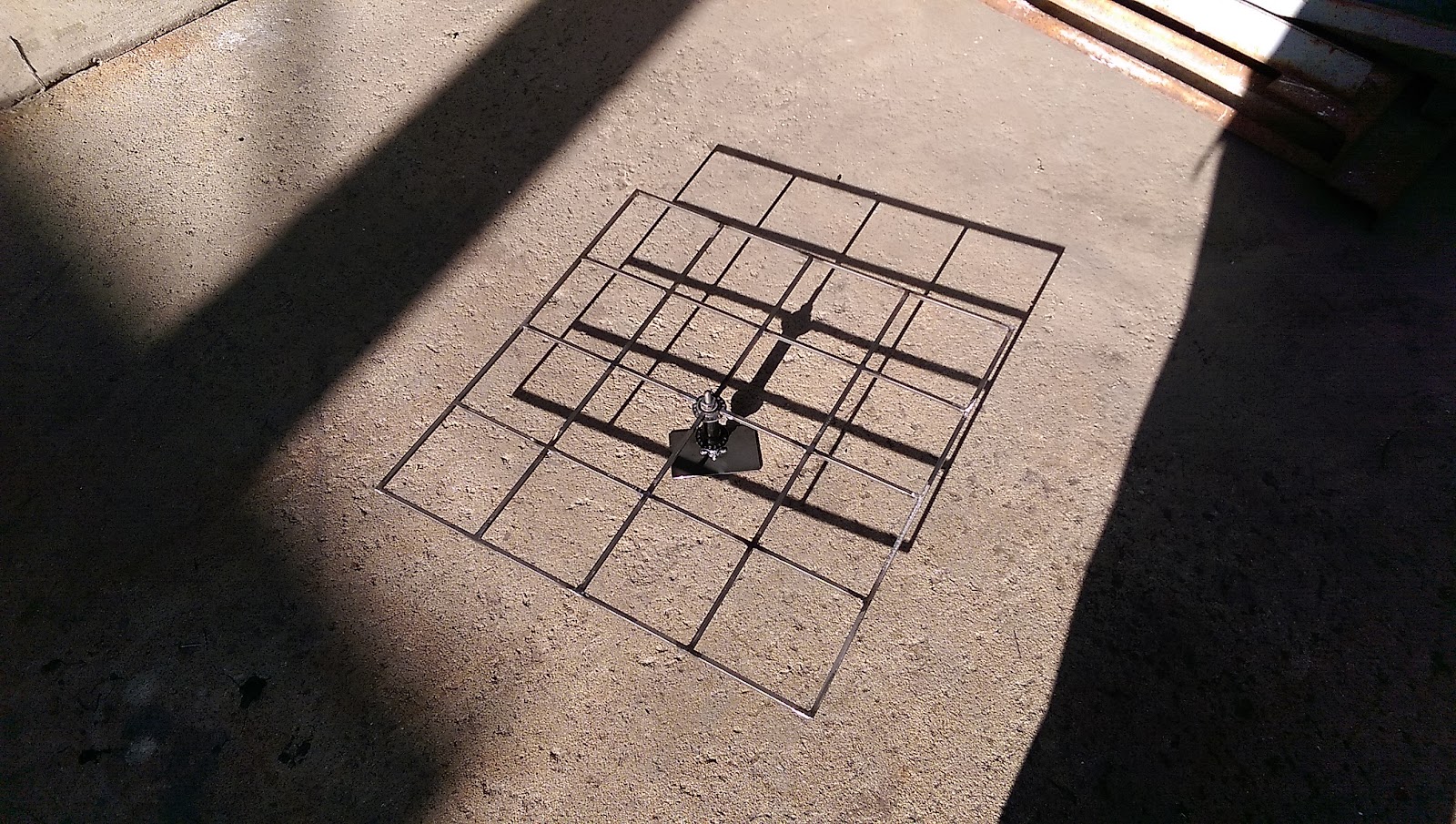
Next I cut a board to mount the square wheel to, combined the two elements, took it upstairs to the photo room in Battelle and threw a spotlight at it with a spin.


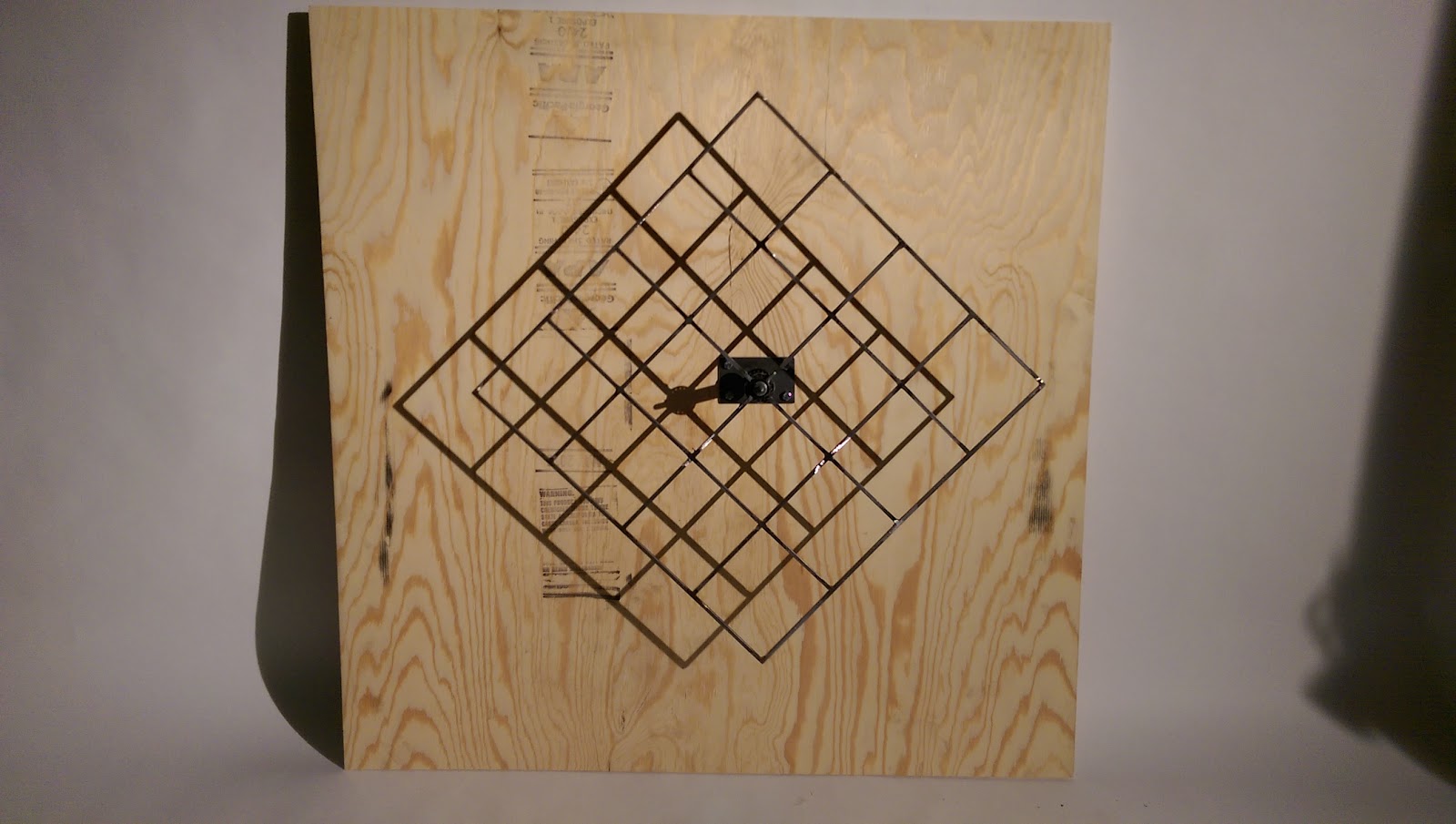
I am rather pleased with the sensation that it creates visually. All that is left to do is paint the surface of the baord and hardware white as well as figure out the most interesting position for the spotlight to exist. No one gets a video of this so just come to my studio at take a look at it for yourself.
I also spent some time this week in the CMoA installing for the Ruben and Isabel Toledo show opening Saturday and found a piece of a plexiglass display box in the garbage. Greg Jones let me have it. After work I took it over to Battelle to start my shift for Saturday and noticed that it did some really interesting things in the sunlight. Later in my studio I experienced its characteristics with respect to all the lights in my space.
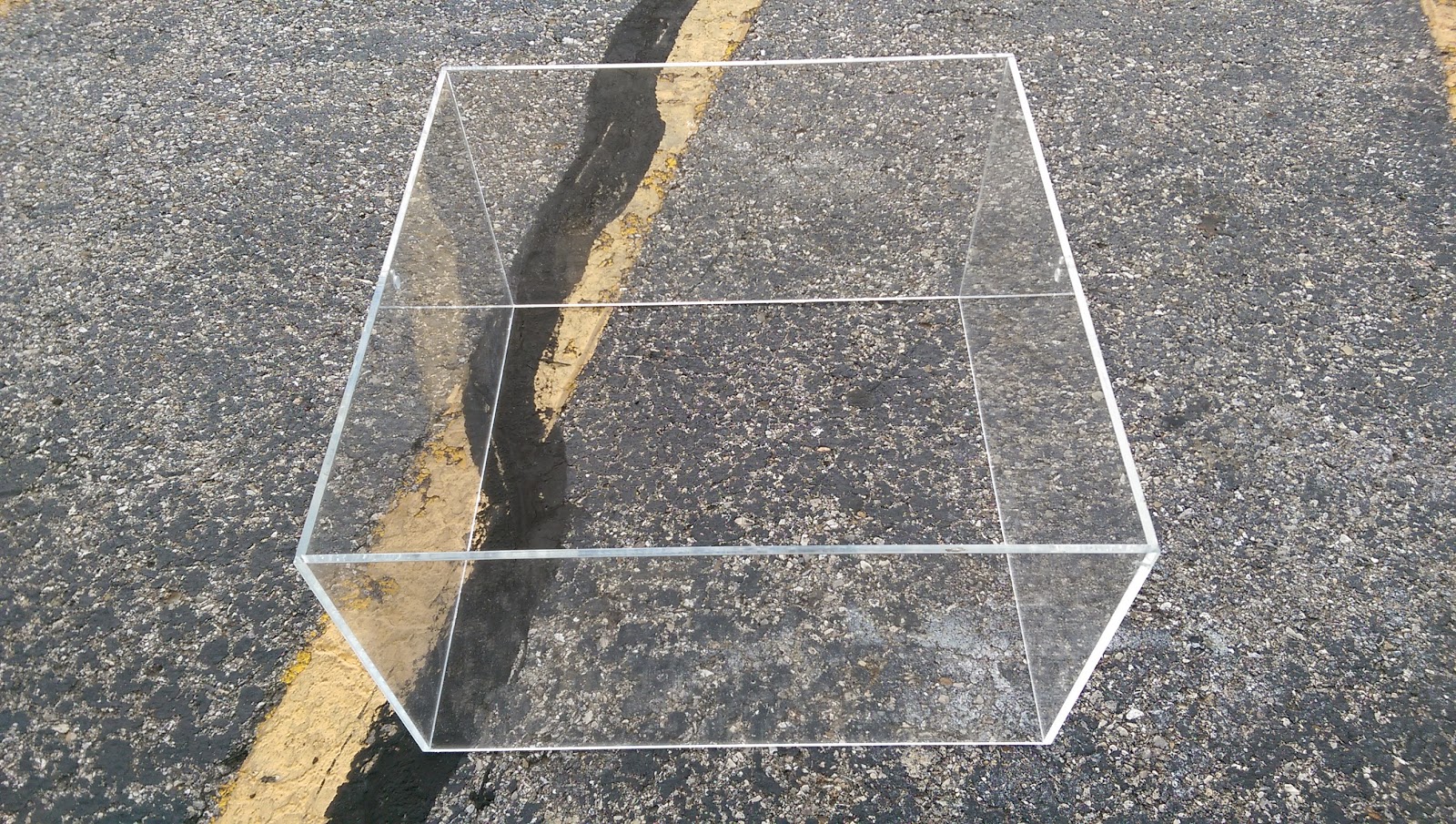

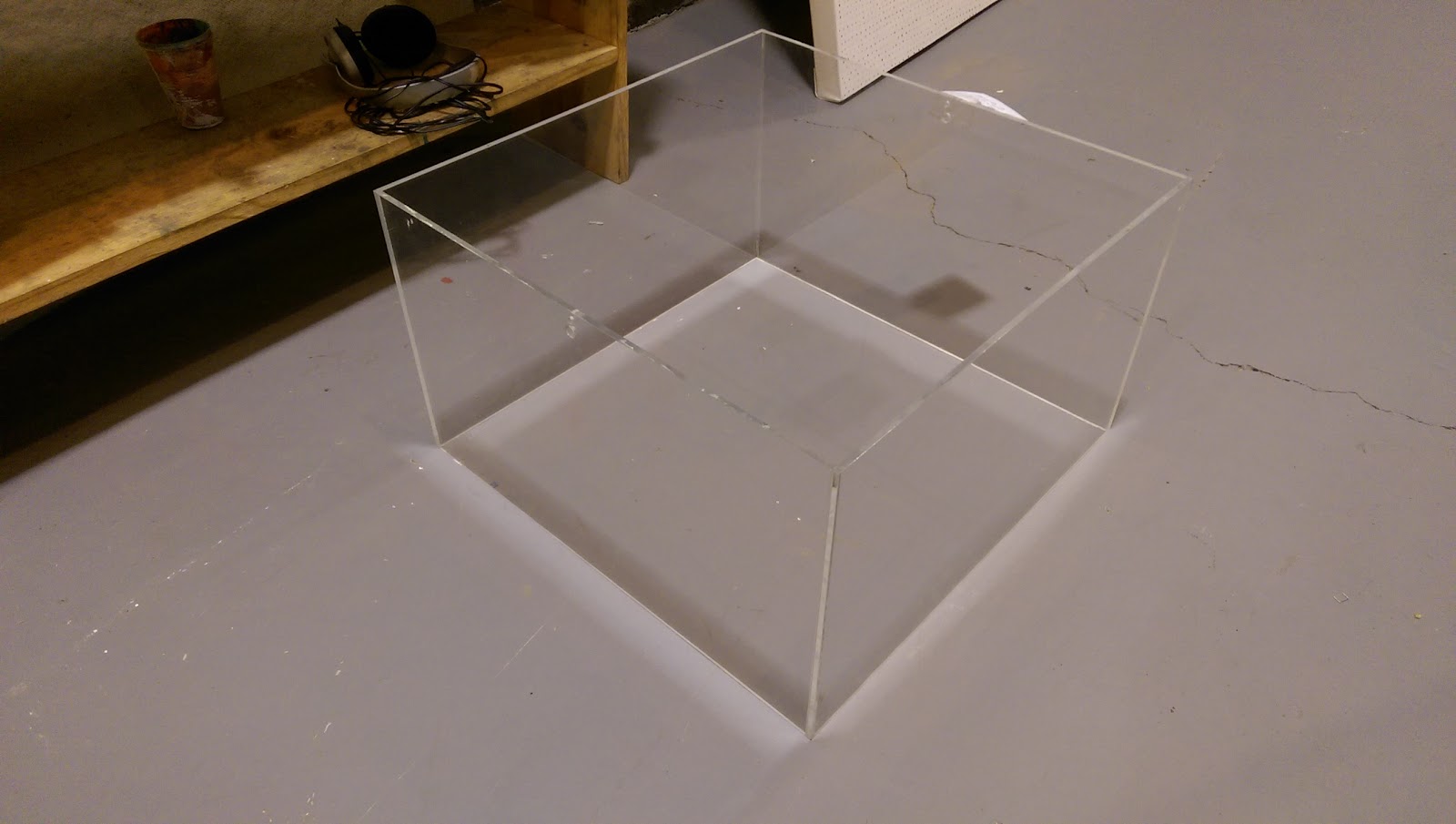
There was this beautiful moment in 1967-1971 when Maurice Tuchman smashed art and science together, pairing artists with different research industries in the United States. Robert Irwin and James Turrell were paired with Dr. Ed Wortz, head of environmental systems research for NASA. Their relationship was incredibly stimulating for Irwin and Wortz in particular and really allowed Irwin to dial in his skills for revealing perception. During this time Irwin spent hours and hours inside of an anechoic chamber which, is a space void of light and sound, as well as suspended above the earth so that sound and vibrations do not travel through the earth and into the system. It was designed to allow future astronauts to experience deprivation of senses that might exist in space travel. After these sessions Irwin and Turrell recalled experiencing perceptual shifts or afterglows from the experience as their senses calibrated back to normal existence. I must experience this at some point in my life. The sooner the better.
In Report on The Art and Technology Program 1967-1971 in the Irwin-Turrell-Worts section Irwin wrote in his notes:
“Allowing people to perceive their perceptions - making them aware of their perceptions. We've decided to investigate this and to make people conscious of their consciousness…
If we define art as part of the realm of experience, we can assume that after a viewer looks at a piece, he leaves with the art, because the “art” has been experienced. We are dealing with the limits of an experience - not, for instance, with the limits of a painting. We have chosen that experience to be defined as “art” because having this label it is given special attention. Perhaps this is all “Art’ means - this frame of mind.
The object of art may be to seek the elimination of the necessity of it.
The work of previous artist have come from their own experiences or insights but haven’t given the experience itself. THey set themselves up as a sort of interpreter for the layman… our interest is in a form where you realize that the media are just perception.
The experience is the “thing”, experiencing is the “object”.
All art is experience, yet all experience is not art. The artist chooses from experience that which he defines out as art, possibly because it has not yet been experienced enough, or because it needs to be experienced more.
All art-world distinctions are meaningless.”
As an artist I really resonate with that last line as well as a lot of what is stated. I understand that it relates to the work of Irwin and Turrell at the time. As anyone else outside of being an artist, I understand how that might be a bit of a kick in the teeth. Some of us like boxes to put things in and others wish to bring the walls down. I just want us all to be humans.
 Monday, October 31, 2016 at 10:16 PM
Monday, October 31, 2016 at 10:16 PM


